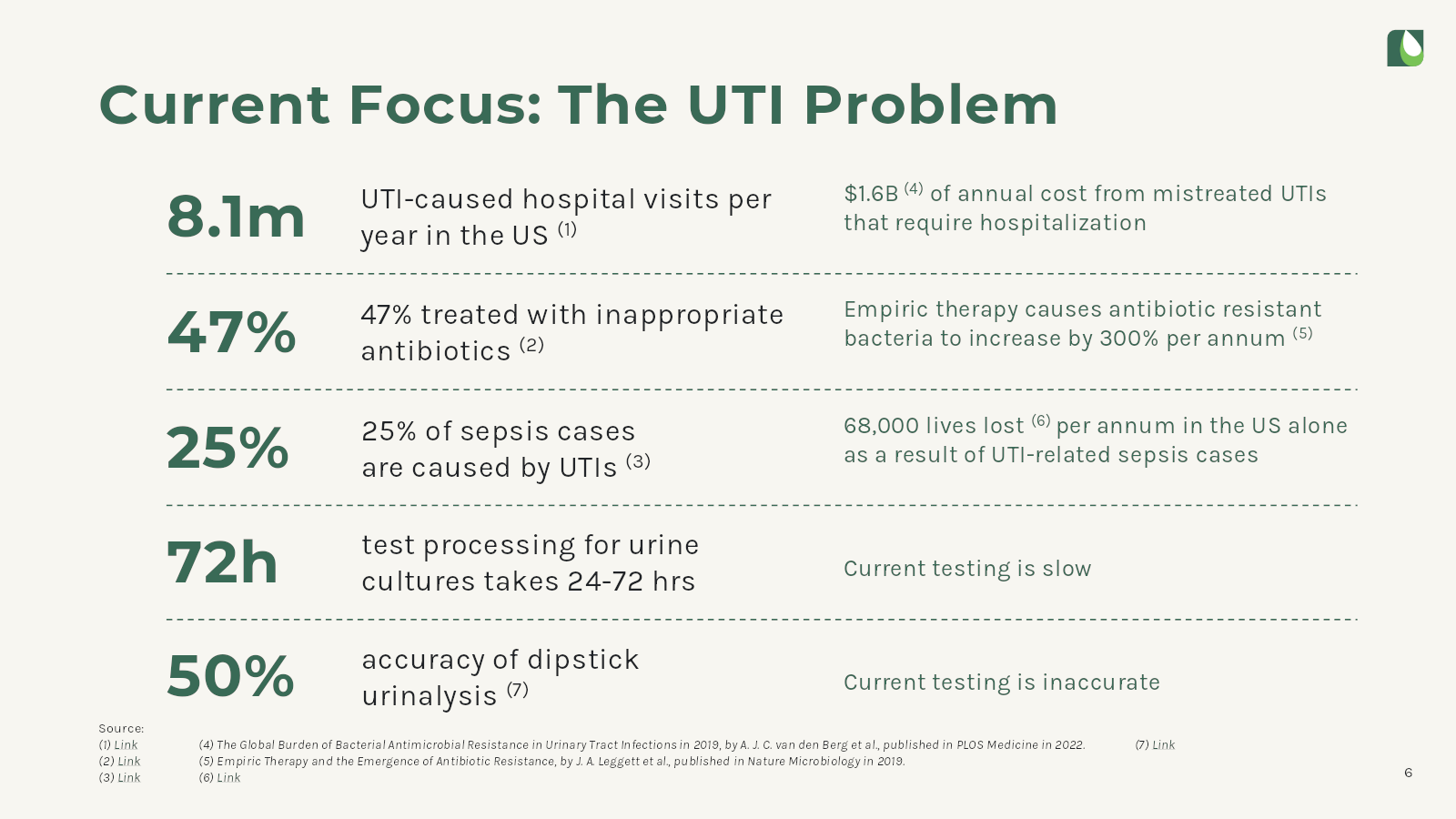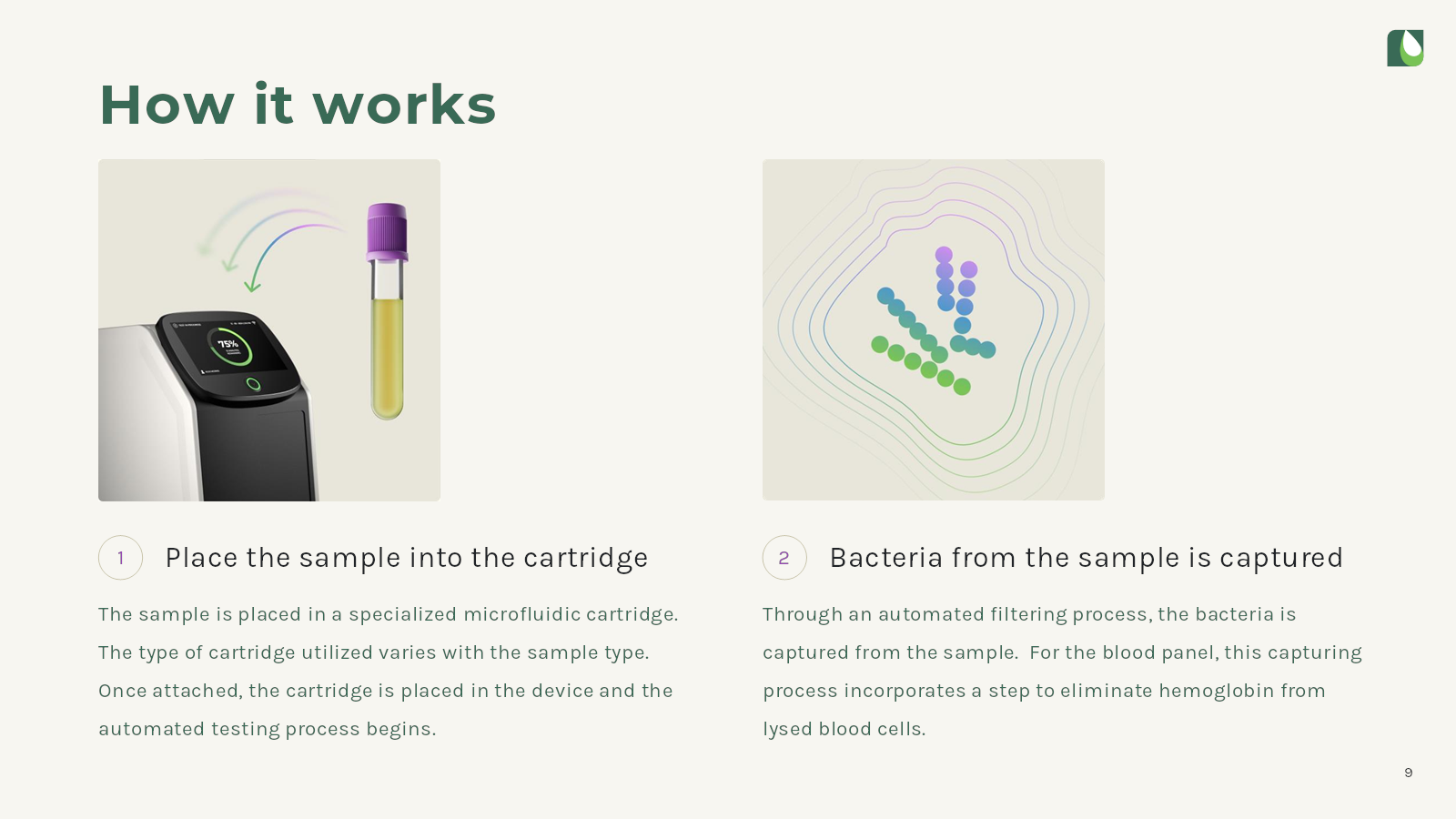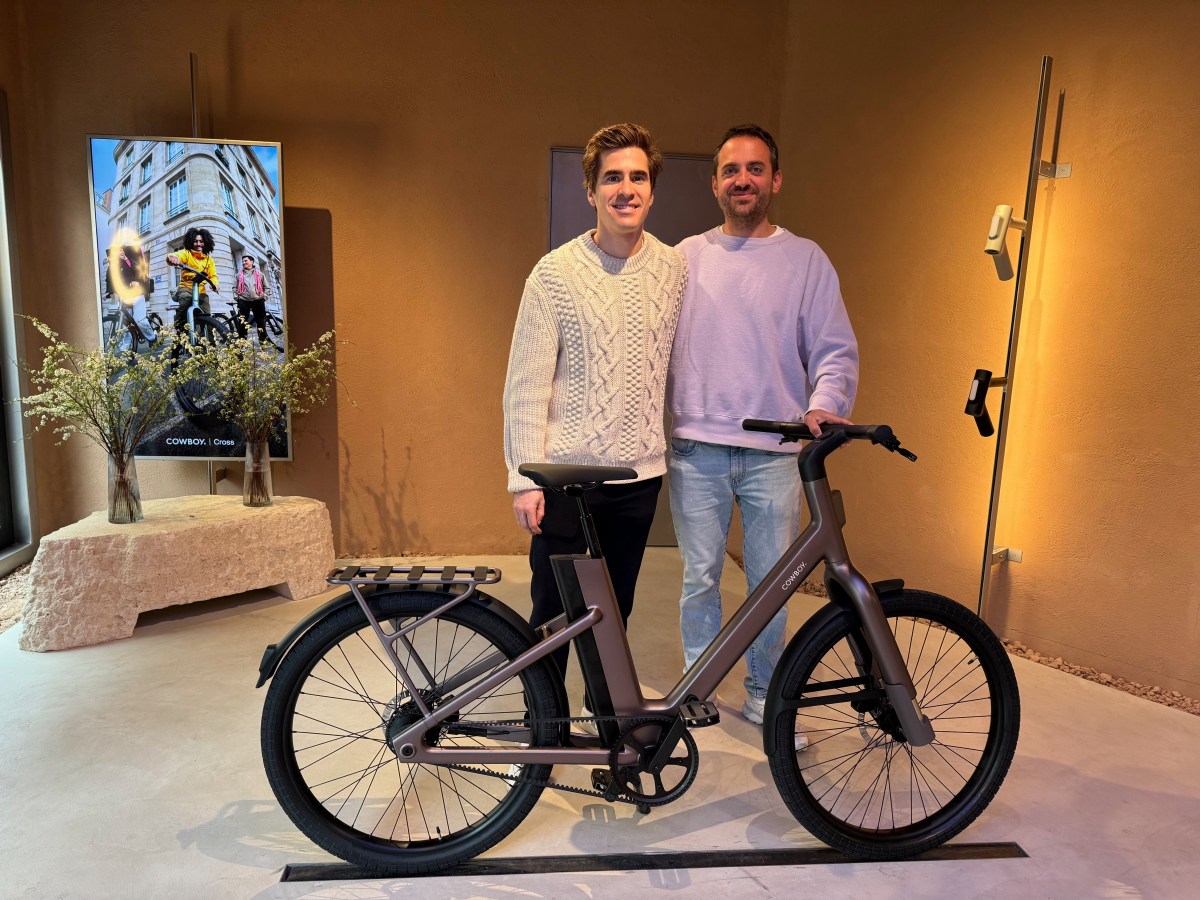Astek Diagnostics recently closed a $2 million round for its urine diagnostics system, showcasing the challenges of fundraising in the medtech industry. The company’s pitch deck contains valuable insights that can serve as a learning opportunity for others.
We are actively seeking unique pitch decks to analyze. If you would like to submit your own, here’s how you can do it.
Slides in this deck
Astek Diagnostics’ 22-slide deck delves into various aspects of the company’s narrative. While comprehensive and impressive, some slides come off as defensive and outdated despite the recent fundraising round. Certain portions of the deck have been redacted.
- Cover slide
- Vision slide
- Platform slide
- Approach slide (Part 1)
- Approach slide (Part 2)
- Current focus slide (Part 1)
- Current focus slide (Part 2)
- Solution slide
- How it works slide (Part 1)
- How it works slide (Part 2)
- Technology slide
- Team slide
- Advisory board slide
- Technology validation testing
- IP overview slide
- Company validation slide
- Company timeline slide
- Investment terms slide
- Commercial and Exit strategy
- Comparable transactions slide
- Executive summary
- Closing slide
Three things to love about Astek Diagnostics’ pitch deck
Where the AD pitch deck is good, it’s great: comprehensive, well-researched and well-designed. Slide 6 — the problem statement — is a great example of all three coming into play.
A comprehensive problem statement

[Slide 6] A great, comprehensive problem statement. Image Credits: Astek Diagnostics
Explaining the problem in a pitch deck is crucial because it lays the foundation for people to understand the necessity and relevance of your startup. This section should captivate the audience by highlighting a gap or inefficiency in the market that the company aims to address. It sets the context for the entire presentation, allowing investors to grasp the magnitude and urgency of the issue at hand. Better still, explaining the problem effectively helps to validate the market demand for a product or service.
In this slide, Astek takes the opportunity to present data and insights that back up its claim, thereby reinforcing the potential for growth and success. This section is a startup’s first step in building a compelling narrative that aligns its mission with the interests and investment goals of would-be investors.
On this slide, Astek paints an impactful picture: huge amounts of hospitalizations, unnecessary treatments, problems with speed and accuracy. Solve these problems, this slide suggests, and almost 70,000 lives per year can be saved.
Another thing this slide does well. It describes the problem, but what’s really going to make investors lean forward is the immense proportion of the problem: 8.1 million hospitalizations indicates that there’s a truly formidable market size at play here.
Solid defendability
In biotech, a company is only as valuable as the ability to protect it, and having a great moat is a key part of building a startup for the ages. The fact that the company is thinking about IP protection is reassuring, although I did have some questions about what each of these actually mean.

[Slide 15] The legal moat around Astek is off to a good start. Image Credits: Astek Diagnostics
One question I have here is why the Test Algorithm patent is shown with a publication number rather than the patent number; the patent (US11,788,962) was granted in October 2023. The second IP entry — the Fluidic Cartridge patent — is marked as pending, but it’s available to the public.
The third one had me flummoxed, so I checked with the team at Run8 Patent Group. They explained that that number is neither a patent nor a publication number: it’s a provisional patent number. We weren’t able to tell whether the patent was converted to a non-provisional patent, but at the very least, the terminology is confusing here.
The final entry on this list — for a Rapid Cartridge Modification — is also confusing. It appears that’s a law firm docket number, which isn’t much of an IP protection, and my friendly patent lawyer friends tell me that simply saying “filing in progress” may have been clearer and potentially a more honest description of what’s going on here.
Easy to understand (but …)
In slides 9 and 10, the company makes it very easy to understand how the system works:

[Slide 9] – How it works, part 1. Image Credits: Astek Diagnostics.

[Slide 10] – How it works, part 2. Image Credits: Astek Diagnostics.
These two slides do a good job explaining how a user would use the product. Insert sample, bacteria are captured, then tested, then you can read what the machine found. From a sales perspective — if I were a buyer of one of these machines — that’s a great top-level view over how a user would use the machine.
But, from the perspective of a consumer, this is how I would expect a machine like this to work. If I, a non-medically-trained person were to walk up to this machine, I think I could use it. The expectation of user experience is so high now, that this isn’t an innovation: This is how things should be. Of course, in medical devices, user experience is sometimes not a high priority, and perhaps the ease of use is a selling point for the machine, but the way these slides are projected, I kind of go “Yes, and so what?”
What I’d really love to have seen here is context. If all the other machines are much harder to use, tell that story. If the machine is way faster, show that comparison. If there is a major technology breakthrough, that is what I would be curious about as an investor.
The product slides shouldn’t show how to hit the minimum viable user experience. It’s better to explain what it is about the product that makes it special, defendable and worth investing in.
Three things that Astek Diagnostics could have improved
There were a lot of potential learning opportunities — many more than I have time or space to go into in this pitch deck teardown, but let’s pick out some takeaways:
Tell the full team story
The team slide has both too much and too little information on it.

[Slide 12] Teeming with team members. Image Credits: Astek Diagnostics
The purpose of a team slide is to tell the story of why a team is uniquely positioned to build this specific company. As an investor, I don’t particularly care about engineers or computer scientists. The team slide is for highlighting the founding team and senior leadership, the folks that are trusted to carry this company through the next few rounds of funding and product development. This slide needs more context to be useful.
Astek does get partial credit for including LinkedIn links to each of the team members, but a brief description under each name would be easier.
Since the company put links to the whole team’s LinkedIn profiles




